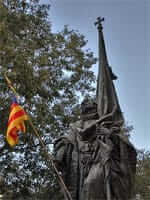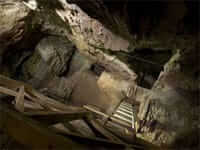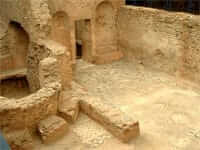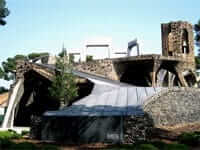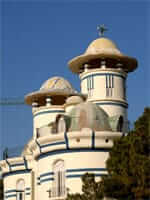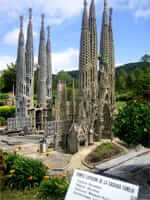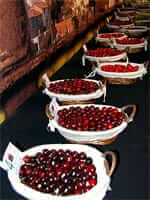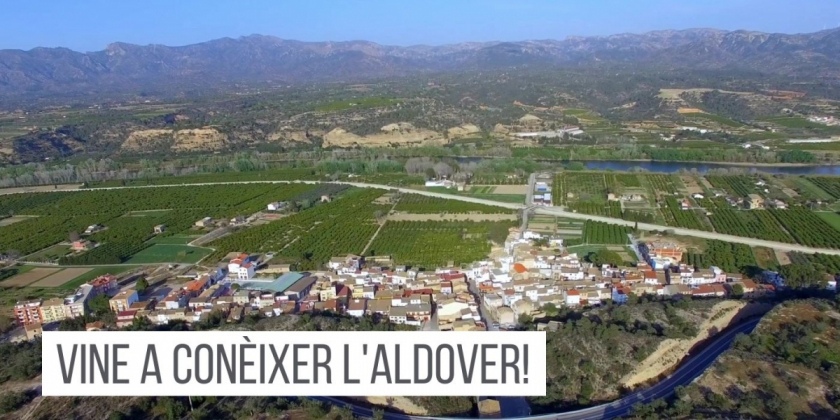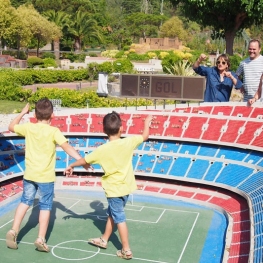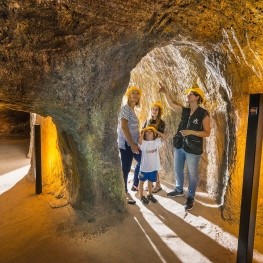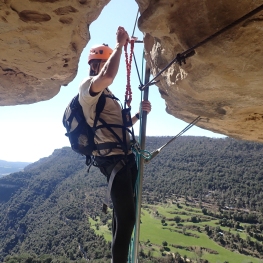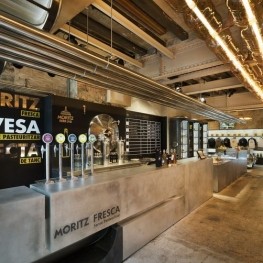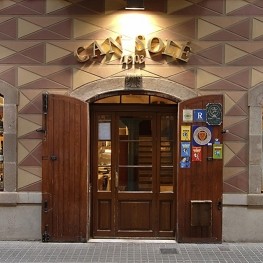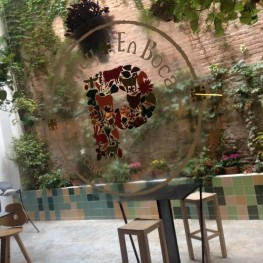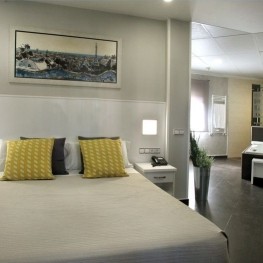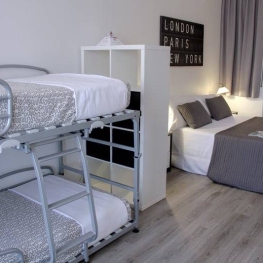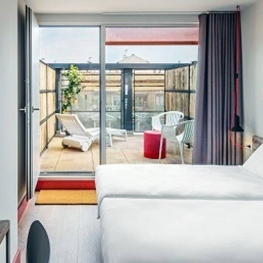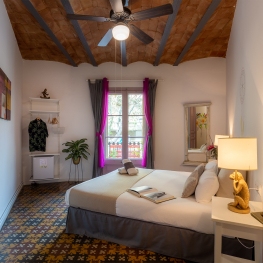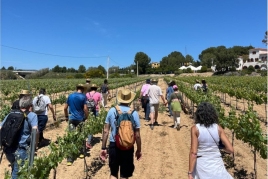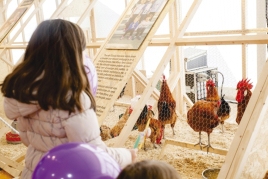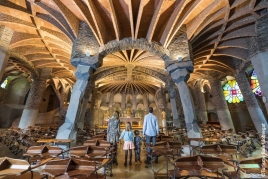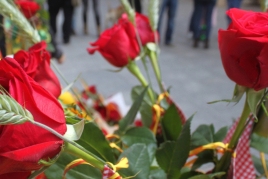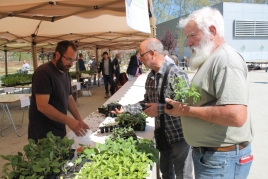The Baix Llobregat, a trip through history
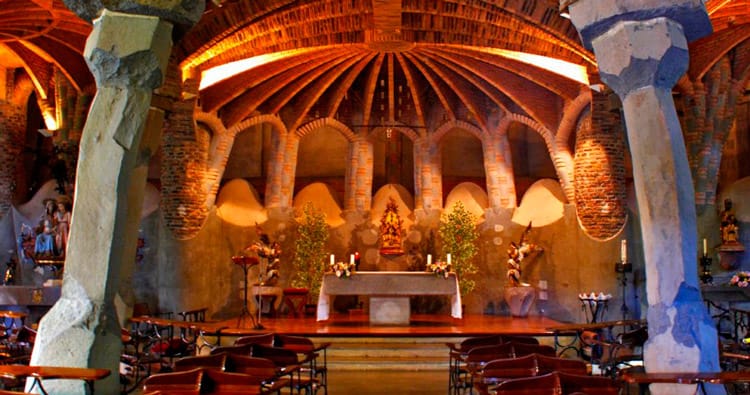
The route offers you this month femTurisme lies south of the Baix Llobregat, a region full of historical heritage, natural and monumental, but often absorbed and forgotten by the tourist attractions and events of Barcelona.
The proposed route is then centered in the towns and cities of the south of the region, so that it can be done in two or three days.
Route's villages
The region
The Baix Llobregat region bordering the coast, is located south of Barcelona and is known to be one of the most important industrial engines Catalonia and the union busiest area of the country.
Historically, the region was inhabited since the Paleolithic era which some remains are preserved. We also found reminiscent of the Iberian and Roman times. Later, during the Middle Ages, after the division of the Catalan territory from the Llobregat river between Carolingian and Saracens, the area was divided stately different lands, baronies and jurisdictions. From this period we find different farmhouses, churches and chapels scattered throughout the region.
During the Industrial Revolution, many textile mills were located on the banks of the river, thus taking advantage of water power and its proximity to the Port of Barcelona. At this time large industrial estates were built that served as housing for workers in the factories of the moment. With the advent of electricity, the industry changed course and applied to new purposes, the energy, and began to see a new type of industry like electrical construction and cement. It is the time that has marked the history of Baix Llobregat.
Gava Mines Archaeological Park
We propose to follow the steps of history and start with the prehistoric remains of Gava. In the Parc de les Mines Arqueològic Gava, you will find an exhibition for all ages, where you can see from above , the opening of one of the oldest Neolithic mines in Europe, Can Mine Tintorer. For conservation reasons, these Neolithic caves are no longer accesinles today, but only a few years ago, were accessible from inside a medieval farmhouse, the Mas de Can Tintorer, which is the name given to the mines. Were discovered in 1972 while the first studies were conducted to develop and build the neighborhood Can Tintorer. The mines are formed by a network of galleries connected together where variscita was extracted (a bluish mineral highly valued of the era that was exchanged with other towns) and later, some of which were used as landfill, through which the investigations of Neolithic settlements have been very fruitful, and others were used as tombs.
Near the Parc Archaeological there is the Museum Gava where the geological and historical evolution of this area is explained, and where some of the original objects found in excavations of mines, such as the Venus de Gava, a statuette was revered as a symbol of fertility.
in the mines of Can Tintorer, where you will find the oldest vestiges of the area. These Neolithic caves are accessible from the interior of a medieval farmhouse that gives name to the caves, which were discovered in 1972 while performing the first works to develop and build the neighborhood Can Tintorer. The mines are formed by a network of tunnels connected together, which was mined variscite (a mineral blue highly valued at the time which was exchanged with other towns) and later, some of which were used as a dumping ground, through which the investigations of Neolithic settlements have been very fruitful, and others were used as tombs.
Visits are made ??each Sunday morning from the center of interpretation of the mines, which displays artifacts found during excavations in the galleries and where there is a review of the natural history of Gava , emphasizing its origins. From this point, the visitor is directed to the farmhouse, and through an old well, using some caving tools (helmet and flashlight), enters the network of galleries. On this visit, the guide explains how different Neolithic settlements lived, its technology variscite mining and the environment in which they lived. Finalment, the tour includes an explanation to the interpretation center on the archaeological remains, the most prominent of which is the Venus de Gava, a small sculpture symbol of fertility.
The footprint of the Romans
In Sant Boi de Llobregat , the Romans have left their baths, the origin of which dates back to the second century AD, a golden age in the area. These springs were privately owned and were used until the fifth century In this case also built up during the seventeenth century, was the perfect place to build a house. A mid-twentieth century, from written records was known about its existence, and has since made a series of works to recover the assets. The year 1998 opened to the public.
The baths were built-up areas divided into two next to each other. The first, housed cold rooms: the apodyterium (dressing), the cold plunge and piscinalis cella (the room and the cold pool). In the other, were the hot chambers: tepydarium (warm room), sudatorium (steam room) and caldarium (hot bath room).
In Sant Boi also find some stately houses of the Middle Ages.
The modern age
Without leaving Sant Boi de Llobregat , history in the region, continues. The municipality is the tomb of one of the most important in Catalonia, Rafael de Casanova, found in the church of Sant Baldiri.
If we go in history, and we move to Santa Coloma de Cervello , you can visit the Colonia Guell, the point most recognized tourist attractions of the region. This modernist building designed by Gaudí, was declared a UNESCO World Heritage Site. La Colonia Güell was complexo textile created by Eusebi Güell (Gaudi the great patron), where in addition to the houses of the workers and factories included the parish church (designed by Gaudi, which opened in 1915). This work is one of the most admired and studied the great architect for his bold and innovative structure and, in turn, typically by Gaudí building elements that are recognized as the inclined columns, brick turns, mosaics, stained glass, etc.
Following modernism, one of the architects of the time, though not as recognized as Antoni Gaudi, was one of his aides Josep Maria Pujol. His best known work in the region is located in Sant Joan Despi . "La Torre de la Creu" (1913-1916) also known as "The House of Ous" as domes look like eggs. It is a modernist building can be seen from the suburban trains its way through the population and that is exactly the style of Gaudi that heretó Pujol teacher.
In the same population, the same modernist can also visit "Can Negre" (1915-1930), an old farmhouse owned by a lawyer (Pere Negre Jover) who commissioned its reform to dignify Pujol. This included many decorative undulating, the most interesting of which was its facade, the central tribune, reminiscent of a carriage.
The "Baix" és Catalonia
Currently, in Torrelles de Llobregat in Catalonia can be tourists in a single day! Catalonia in Miniature is a theme park of models declared of National Tourist Interest. The set of models is within an area of ??over 25,000 square meters and brings together some 150 monuments and buildings representing our country at a scale of 1:25 and allow us to take a tour of the most outstanding works of Romanesque, Gothic and Catalan Modernism.
In the same population, Torrelles , it is advisable to visit the Cherry Fair the month of June, the feast intended to celebrate the start of the collection of cherry and includes various cultural and sports activities. This is just one of the many parties that are cherry throughout the region during this month (also in Santa Coloma de Cervello , Sant Climent and Papiol ). The region is also famous for is the one that produces this fruit.
What to do
Catalunya en miniatura
Torrelles de LlobregatA theme park where you will find an exhibition of 1:25 scale…
Pyrenees Extrem
El Prat de Llobregat (a 4.7 Km)Live your adventure with Pyrenees Extrem and discover a lot of exciting…
Teatre Lliure de Gràcia
Barcelona (a 9.1 Km)Come and enjoy the Teatre Lliure de Gràcia and enter a world…
Where to eat
Fàbrica Moritz Barcelona
Barcelona (a 9 Km)The Moritz Barcelona Factory is a unique space, divided into three floors,…
Restaurant Windsor
Barcelona (a 8.8 Km)The Windsor restaurant, located in Barcelona, is a benchmark of contemporary Catalan…
Where to sleep
Aparhotel Atenea Calabria
Barcelona (a 8.1 Km)The Calabria apartments offer a stunning location in the Eixample district of…
Generator Barcelona
Barcelona (a 9.4 Km)Barcelona generator is a high-design hostel whose decor displays a mix of…

